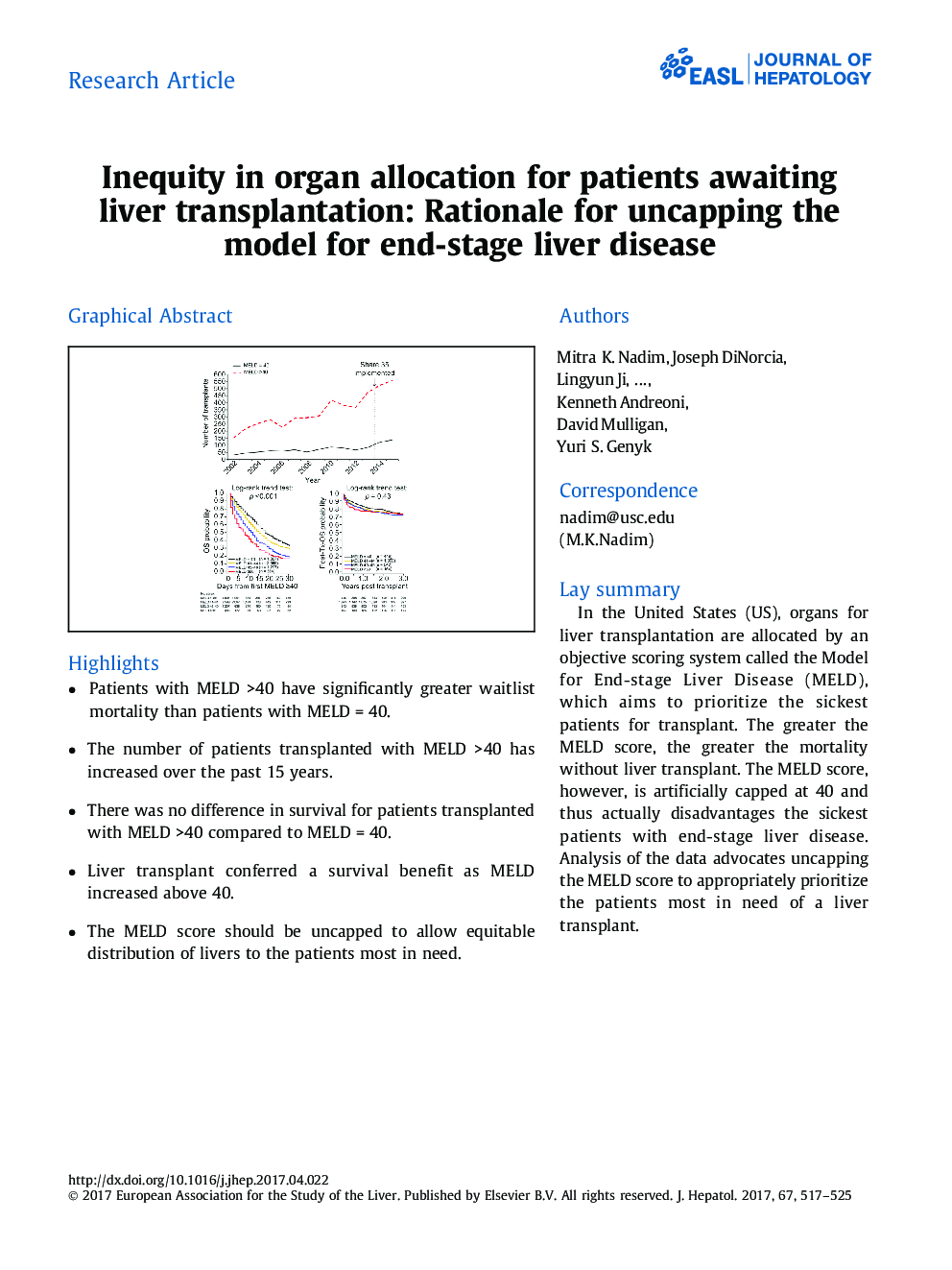| کد مقاله | کد نشریه | سال انتشار | مقاله انگلیسی | نسخه تمام متن |
|---|---|---|---|---|
| 5660396 | 1407489 | 2017 | 10 صفحه PDF | دانلود رایگان |
- Patients with MELD >40 have significantly greater waitlist mortality than patients with MELDÂ =Â 40.
- The number of patients transplanted with MELD >40 has increased over the past 15Â years.
- There was no difference in survival for patients transplanted with MELD >40 compared to MELDÂ =Â 40.
- Liver transplant conferred a survival benefit as MELD increased above 40.
- The MELD score should be uncapped to allow equitable distribution of livers to the patients most in need.
Background & AimThe goal of organ allocation is to distribute a scarce resource equitably to the sickest patients. In the United States, the Model for End-stage Liver Disease (MELD) is used to allocate livers for transplantation. Patients with greater MELD scores are at greater risk of death on the waitlist and are prioritized for liver transplant (LT). The MELD is capped at 40 however, and patients with calculated MELD scores >40 are not prioritized despite increased mortality. We aimed to evaluate waitlist and post-transplant survival stratified by MELD to determine outcomes in patients with MELD >40.MethodsUsing United Network for Organ Sharing data, we identified patients listed for LT from February 2002 through to December 2012. Waitlist candidates with MELD ⩾40 were followed for 30 days or until the earliest occurrence of death or transplant.ResultsOf 65,776 waitlisted patients, 3.3% had MELD ⩾40 at registration, and an additional 7.3% had MELD scores increase to ⩾40 after waitlist registration. A total of 30,369 (46.2%) underwent LT, of which 2,615 (8.6%) had MELD ⩾40 at transplant. Compared to MELD 40, the hazard ratio of death within 30 days of registration was 1.4 (95% CI 1.2-1.6) for patients with MELD 41-44, 2.6 (95% CI 2.1-3.1) for MELD 45-49, and 5.0 (95% CI 4.1-6.1) for MELD ⩾50. There was no difference in 1- and 3-year survival for patients transplanted with MELD >40 compared to MELD = 40. A survival benefit associated with LT was seen as MELD increased above 40.ConclusionsPatients with MELD >40 have significantly greater waitlist mortality but comparable post-transplant outcomes to patients with MELD = 40 and, therefore, should be given priority for LT. Uncapping the MELD will allow more equitable organ distribution aligned with the principle of prioritizing patients most in need.Lay summary: In the United States (US), organs for liver transplantation are allocated by an objective scoring system called the Model for End-stage Liver Disease (MELD), which aims to prioritize the sickest patients for transplant. The greater the MELD score, the greater the mortality without liver transplant. The MELD score, however, is artificially capped at 40 and thus actually disadvantages the sickest patients with end-stage liver disease. Analysis of the data advocates uncapping the MELD score to appropriately prioritize the patients most in need of a liver transplant.
163
Journal: Journal of Hepatology - Volume 67, Issue 3, September 2017, Pages 517-525
